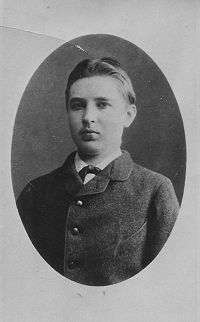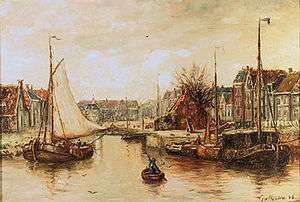Gerrit van Houten


Gerrit van Houten (also known as Gerry Wood), (29 August 1866, Groningen – 18 January 1934, Santpoort) was a Dutch painter and artist.
Gerrit's father, Hindrik van Houten (1833–1883), was an amateur artist and his aunt Sina Mesdag-van Houten, his sister Alida and niece Barbara were artists. The family encouraged Gerrit's artistic inclinations, since he showed talent in painting watercolors. Already in 1882, when he was 15 years old, Van Houten exhibited a watercolor at the art-loving Pictura Society in Groningen. He took drawing lessons from Egenberger at Academie Minerva (1882) and studied some time at the Royal Academy of Art, The Hague (1884–1885).
Van Houten painted still lifes, portraits, cityscapes, seascapes and landscapes in a naturalistic style with an impressionistic touch. He painted his landscapes mainly in the vicinity of Groningen and Almelo, where his mother's family came from. His later works became coarser and show an unbalanced line technique, which reflected his state of mind. Gerrit suffered from depression and had to be treated. His illness worsened rapidly and was incurable. This brought a premature end to a promising career as an artist. Van Houten's health deteriorated rapidly and in 1892 he was hospitalized in Santpoort and could not draw and paint. He died in Santpoort and was buried at the South Cemetery in Groningen.
The surviving works of Gerrit van Houten were painted between his thirteenth and twenty-fourth years. They included about 880 drawings, 180 watercolors, 85 paintings and 20 sketchbooks, the majority of which were preserved by the Gerrit van Houten Foundation.[1]